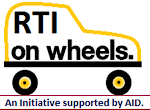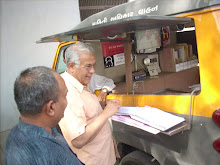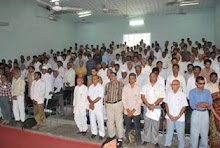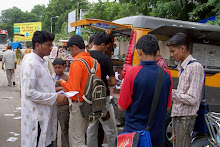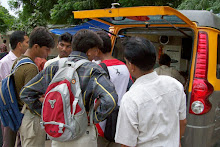Times
of India: Chennai: Sunday, 30 November 2014.
Recently,
anticipating the Election Commission's demand for an updated village map,
Jaisen Nedumpala set out to get the survey done in record time. There were no
tape measures or tripods. Instead, the assistant panchayat secretary of
Koorachundu village in Kerala's Kozhikode district roped in volunteers wielding
smartphones with GPS apps to track the village boundaries and finished the
project in just four days, a process that otherwise would've gone on for at
least a month. This data was then uploaded to a free digital map of the
village.
"I t
would've been impossible to accurately update if we had waited for the
government to give us a map before the panchayat elections in 2015. Now, we are
ready whenever they want it done," says Nedumpala.
Even as a CBI
enquiry is on about Google's Mapathon contest of 2013 for possibly mapping
classified areas, amateur cartographers like Ne dumpala continue to use Global
Positioning System trackers and satellite images to map everything from the
biodiversity of the Western Ghats to the state of public toilets in Chennai and
Hyderabad. This data is mostly uploaded to the free OpenStreetMap, the
Wikipedia of maps that allows mapmakers to edit and collaborate.
Technology is
enabling this trend of digital mapping, but increased interest in the field in
the last few years is a result of a better understanding of what these maps can
be used for, says Arun Ganesh, educational consultant with Tata Institute of
Fundamental Studies. "Maps give a context to most of our problems, and
tell a story," he says.
To weave a
tale through maps, hard data is required. Some map-makers approach the
government, which is never easy, so most researchers start by filing RTI
applications. Transparent Chennai, an NGO working on urban issues, followed
this up with field visits. When they finally mapped all 49 of the 714 public
toilets in Chennai to determine how the utilities are planned and why half of
them are unused, media and the state government took note, says project
director Nithya V Raman. The Chennai Corporation even took tips from the NGO
while recently finalizing 348 locations for building new toilets.
The other way
to collect information is to crowdsource. Harass map-Mumbai, for instance,
allows anyone to log sexual harassment cases across Mumbai.
The data
helped NGO Akshara Centre pinpoint vulnerable locations and identify patterns
of violence. Gautam Garg, founder of Zero Crime which maps thefts, phone
snatching and other criminal offences across Delhi, is considering offering NGO
links to en courage more people to report cases.
For trained
digital cartographers, the most challenging work is mapping natural disasters.
Software developer Sajjad Anwar from Bangalore was volunteering with HOT
(Humanitarian OpenStreet Mapping) during typhoon Haiyan that devastated parts
of Philippines in 2013. "It felt great when aid agencies like the Red
Cross printed our maps for those delivering food and medicines," says
Anwar, who also helped out during the Uttarakhand flashfloods.
For all the
enthusiasm around citizen mapmaking, legally it is still a grey area.
"Mapping is the prerogative of Survey of India (SoI) but their maps are
limited," says H S Sudhira, director, Gubbi Labs, a research collective
near Bangalore that has mapped Gubbi town complete with its chemists and cycle
shops, a detailing that can't be expected from SoI.




